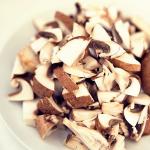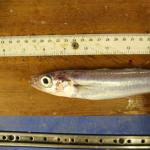Thank you
Grapefruit is a plant from the genus of citrus fruits that produces fairly large fruits of the same name. The name of the fruit comes from the combination of English words “ grape" And " fetus”, as these giant fruits often grow in grape-like clusters.
Origin
This fruit became famous in the mid-eighteenth century, thanks to an English priest and botanist Griffiths Hughes who described the plant. It was discovered in the mid-seventeenth century by sailors on the island of Barbados. The main version of the origin of this fruit is the hybridization of orange and pomelo produced by nature itself. Moreover, grapefruit took much more qualities from the second “parent” than from the first. This plant began to be grown on plantations around the end of the nineteenth century. Before this, trees were only used to decorate gardens and greenhouses.A little botany
The tree reaches a height of 15 meters, although more often it grows no more than 6 meters. Quite large dark leaves and white flowers ( up to five centimeters in diameter). From flowering to harvest it takes nine to twelve months; the fruits ripen by early February.Varieties
About two dozen varieties of this plant are known; they differ from each other primarily in the color of the skin and pulp. So the two main groups are represented by yellow and red fruits.Red fruits are sweeter. In addition, varieties differ in the number of seeds. The main world supplier of this fruit is the United States of America, although the plant grows successfully in subtropics around the world.
Composition, vitamins, calories
Water makes up most of the fruit - up to 90%.The protein content in the pulp is very small - only half a percent, and even less fat - 0.1%, sugars up to 7% ( the basis is glucose, sucrose and fructose are also present).
Among the vitamins, mention should be made of vitamin WITH , provitamin A And AT 2 , R , D .
The microelements in fruits include iron, calcium, potassium, phosphorus, magnesium, zinc and sodium.
The glycoside naringin gives bitterness to fruits. In addition, there are volatile compounds phytoncides and inositol - a substance that helps cleanse the body of poisons and prevent fat deposition. The zest is rich in pectin.
Calorie content 100 gr. fruit pulp is 29 kilocalories.
Properties
In all reference books, this fruit is classified as a dietary product.Grapefruit has the following properties:
- Binds free radicals in cells,
- Reduces cholesterol levels,
- Regulates the ratio of different types of fats in the blood,
- Reduces blood pressure,
- Helps liver function,
- Suppresses the activity of microbes and fungi,
- Increases the acidity of the gastric environment,
- Improves digestion,
- Activates intestinal motor function,
- Activates metabolic processes,
- Activates sugar metabolism
- Cures periodontitis,
- Tones.
May cause harm
If used and consumed inappropriately, this fruit can actually cause harm to the body. For example, in the juice and pulp of fruits there is a substance furanocoumarin, which inhibits liver function. The combination of this substance and many medications can be harmful to health or completely reverse the benefits of the medications.For example, when drinking juice and hormonal contraceptives at the same time, the effect of the latter is reduced and the likelihood of pregnancy increases.
When taking medications that reduce blood cholesterol, consuming grapefruit may increase the side effects associated with the drug. In the United States, there have even been several cases of death of patients who consumed juice and lipid-lowering drugs at the same time.
Grapefruit can significantly increase the concentration of drugs in the blood, which can also sometimes be very dangerous.
This fruit almost completely blocks the effect of antidepressants.
Research on this topic has been conducted for decades in the United States, because residents of this country consume a lot of juice and fresh fruits.
According to another study by American scientists, this fetus is one of the factors that provokes the development of cancer in postmenopausal women. Scientists from Southern California conducted a study that proves: postmenopausal women who consumed only 100 grams. eating this fruit every day has a thirty percent higher chance of developing breast cancer. Scientists explain this effect by the fact that some substances present in this citrus “take up too much” the work of the liver and thereby prevent it from performing its direct functions, including the processing of hormones.
In order to truly prove the ability of fetal components to provoke cancer, more than one study needs to be conducted, since many important health indicators of the women who participated in the experiment, for example, the condition of their liver, have not yet been taken into account. After all, the liver plays an important role in the metabolism of female sex hormones.
Who shouldn't eat grapefruits?
- For stomach and duodenal ulcers,
- In severe acute kidney disease,
- For gastritis with high acidity,
- For intestinal inflammation,
- If you are allergic to citrus fruits, use caution.
For weight loss
 Nutritionists from San Diego conducted an experiment to study the effect of grapefruit on fat metabolism and human weight, involving several dozen volunteers. Each project participant consumed half of the fruit at each meal. Over 16 weeks, the weight of obese participants decreased by an average of one and a half kilograms. But the participants who ate the same diet, but without grapefruit, lost only 200 grams.
Nutritionists from San Diego conducted an experiment to study the effect of grapefruit on fat metabolism and human weight, involving several dozen volunteers. Each project participant consumed half of the fruit at each meal. Over 16 weeks, the weight of obese participants decreased by an average of one and a half kilograms. But the participants who ate the same diet, but without grapefruit, lost only 200 grams. Thus, to lose weight you should only eat fruits regularly. You don’t have to adjust your regular menu. These results are explained by the fact that the fruits contain a substance that accelerates the metabolism of sugar and fat.
By eating half the fruit before each meal, you can lose up to four kilograms in three months. It is interesting that drinking juice is not so effective - on average, only one and a half kilograms are lost in three months.
When consuming these fruits on an empty stomach, it should be borne in mind that high levels of acid can negatively affect the condition of the oral mucosa, tooth enamel, and stomach mucosa.
Diets
Diet No. 1You can consume seven citrus fruits and seven boiled egg whites per day. Food should be consumed within 90 minutes. You should also drink two to three liters of water or green tea without sugar per day. Anyone who can survive on such a diet for 7 days will receive a “prize” - minus 7 kilograms. Doctors do not recommend sticking to such a diet for more than three days.
Diet No. 2
First day:
Breakfast: juice from one citrus, 50 gr. ham, tea or coffee not sweet.
Dinner: juice from one citrus, salad ( 250 gr. without potatoes and corn) or a glass of broth and two crackers.
Dinner: 150 gr. boiled lean meat and 200 gr. salad
Second day:
Breakfast: salad with grapefruit, other citrus fruits and apple, coffee or tea not sweet.
Dinner: 50 gr. cottage cheese, one citrus.
Dinner: 200 gr. boiled chicken breast, 2 tomatoes, 12 citrus.
Third day:
Breakfast: 2 boiled eggs, one citrus fruit, coffee or tea without sugar.
Dinner: 250 gr. salad without corn and potatoes, one citrus, coffee or tea.
Dinner: 150 gr. boiled lean meat, salad, tea.
Fourth day:
Breakfast: four tablespoons of porridge with low-fat yogurt, one citrus.
Dinner: salad of leaves and cucumbers, one citrus.
Dinner: 250 gr. fish or chicken, a glass of tomato juice.
Fifth day:
Breakfast: one boiled chicken egg, tomato, citrus.
Dinner: large baked potatoes, chopped raw vegetables.
Dinner: 200 gr. fish, stewed vegetables, coffee or tea.
Sixth and seventh days:
select menu from previous days.
Should not be continued for more than one week.
Juice
 It should be consumed in moderate dosages and then the benefits will be obvious. To soften the bitter taste, it is recommended to make cocktails from freshly squeezed juices of orange, grapefruit and apricot. In terms of its chemical composition and properties, this juice is very similar to lemon juice.
It should be consumed in moderate dosages and then the benefits will be obvious. To soften the bitter taste, it is recommended to make cocktails from freshly squeezed juices of orange, grapefruit and apricot. In terms of its chemical composition and properties, this juice is very similar to lemon juice. 1. If you have constipation, you should start the day with 200 ml of the juice received.
2. If you have insomnia, you should end the day with 200 ml of the juice received.
3. For depression and chronic fatigue, it is recommended to drink 200 ml of juice at breakfast.
4. To improve digestion and reduce blood pressure, you should drink 50 ml of juice with one tablespoon of honey half an hour before each meal.
5. Used to prevent and treat malaria ( contains quinine).
6. Helps lower temperature during fever.
7. Used in complex therapy in the treatment of hepatitis WITH to prevent chronicity of the process and alleviate the course of the disease.
8. Strengthens the immune system.
9. As a choleretic agent, you should drink juice diluted in equal proportions with water.
10. Strengthens the walls of blood vessels, preventing varicose veins.
11. Widely used in the preparation of face and body masks. The juice inhibits the aging process, moisturizes and vitaminizes, and has a weak lifting effect.
The juice of red varieties of fruits is healthier and tastier, since, among other things, it contains the substance lycopene, which is a strong antioxidant.
Face masks
Both the pulp and juice of this fruit contain a lot of biologically active substances, so many valuable skin care products can be prepared from the fruit.1. To give the skin a well-groomed appearance and smooth it, take one tablespoon of grapefruit juice, 1 tbsp. sour cream, 1 tsp. olive oil, one yolk. Keep the mixture on the face for twenty minutes, remove with warm water.
2. To eliminate age spots and freckles: take 3 tbsp. grapefruit juice, 1 tbsp. yeast, mix and place in a bowl with boiling water for a couple of minutes. Apply the resulting mixture to your face, and after a quarter of an hour, wash with green tea.
3. To eliminate fine wrinkles: 2 tbsp. mix citrus juice with 1 tbsp. any vegetable oil, add enough rice flour to form a thick mass. Apply the mixture to your face and wash with warm water after a quarter of an hour.
4. Vitamin mask: 1 tbsp. Grind the fruit pulp, combine with 1 tsp. carrot juice, 1 tsp. cream, 1 tbsp. starch. Leave on skin for 20 minutes. Wash first with citrus juice, then after drying the skin again with water.
5. For moisturizing: 1 tbsp. mix citrus juice with 1 tsp. honey, 1 yolk. Treat face for 10 minutes, rinse with warm water.
6. For oily skin: combine citrus juice with wheat flour or oatmeal until it becomes sour cream, treat your face, and after 20 minutes wash with water at room temperature.
7. For oily skin: remove the pulp from 12 fruits, chop and add 2 tbsp. kefir Place the mixture in the refrigerator for 60 minutes. Place cold on face for 25 minutes. Wash with water at room temperature.
8. Lotion for oily skin: squeeze the juice from one citrus, add a little camphor alcohol. Use twice a day.
9. For enlarged pores on the face: mix mineral water with citrus juice in equal proportions, wash with the mixture.
Benefits for hair
Grapefruit preparations are good for hair. They eliminate dandruff, improve hair quality, and prevent hair loss.The effect of using this fruit has been clinically proven and a medicine against baldness and dandruff is even produced based on its seeds, pulp and partitions.
You can use grapefruit essential oil to strengthen your hair.
- In 1 tbsp. Add 5 drops of grapefruit oil from any vegetable oil and gently massage the resulting preparation into the scalp using your fingertips. The procedure should be continued for 5 to 10 minutes, after which you should put an insulating cap on your head and sit for another 15 minutes. Wash your hair using shampoo.
- Restoring hair mask: 1 yolk, 1 tsp. olive oil + 5 drops grapefruit oil, 1 tsp. honey This composition should be spread evenly over all hair to the ends, put on a plastic bag or cap for half an hour. After completing the procedure, the hair is washed with shampoo.
Essential oil
Essential oil is prepared from the peel of the fruit using cold pressing. The aroma of this oil balances the nervous system, calms, deprives a person of illusions, and helps to communicate with others.In cosmetology, it is ideal for oily skin: it tightens pores, eliminates freckles, regulates the function of the sebaceous glands, and prevents the formation of sebaceous plugs.
Also used in the care of oily hair due to its ability to regulate sebum production.
Used in anti-cellulite preparations for massage.
Promotes an even, beautiful tan. You should drink 1 drop orally, diluted with juice.
It is used to cleanse blood and lymph orally, as well as for fumigating premises.
The oil should not be consumed on an empty stomach.
Seed extract - antibiotic
This is a unique natural antimicrobial and antiviral drug. According to some reports, the extract can be used instead of antibiotics. And if used simultaneously with medications, recovery occurs faster.Indications:
- Treatment and prevention of bacterial, fungal and viral diseases,
- Inflammatory processes of ENT organs,
- Inflammation of the oral cavity,
- Urticaria, dermatitis and dermatoses,
- High cholesterol levels
- To prevent a heart attack.
The extract is used orally, for instillation into the nose, ears ( after dilution), for gargling, rubbing into affected areas of the body.
Peel
The peel of this fruit contains no less useful substances than the pulp. Therefore, you should not rush to throw it in the trash.1. Candied fruit. Before making, rinse thoroughly and immerse in boiling water for 1 minute to remove wax and remove harmful substances used for preservation. For half a glass of crushed crusts, take the same amount of sugar. Soak the peels for 3 hours in three waters, then add sugar and cook over low heat until the water has evaporated. Place on a sheet and keep in the oven until completely dry at a temperature of about 80 degrees.
2. Infusion that normalizes blood sugar: 1 tbsp. Finely chopped peel, brew 200 ml of boiling water, keep on fire until boiling, remove, let stand for 30 minutes. Pass through a sieve and consume 2 tablespoons three times a day 15 minutes before meals.
3. Inhaling the smell of grapefruit peel improves the emotional background and tones.
4. To whiten your hands and moisturize, you should rub the crust on your hands.
5. Bath: take a glass of zest, steam it with three liters of boiling water, keep it on the fire until it boils, turn it off and cover the container for 60 minutes. Next, strain and pour into the bath. A bath with this preparation acts similarly to a bath with essential oil.
Helps with diabetes
According to Israeli scientists, this fruit will help fight type 2 diabetes. Substance naringenin, present in the pulp and membranes of this citrus, is a powerful antioxidant that makes this fruit bitter. At the same time, when naringenin enters the body, it acts in the same way as medications taken by people suffering from type 2 diabetes.The cause of diabetes is the insensitivity of the body's cells to the insulin produced by the body itself. All medications increase insulin sensitivity. Naringenin works in the same way. Therefore, grapefruit can be used to prevent the disease. It is likely that new drugs for the treatment of diabetes will be created based on naringenin.
Balm for the heart
 The positive effect of this fruit on the heart is based primarily on its anti-cholesterol properties. It has already been proven in laboratory and clinical trials that red fruit juice reduces the amount of “bad” cholesterol in the blood. It is these lipoproteins that cause most heart and vascular diseases.
The positive effect of this fruit on the heart is based primarily on its anti-cholesterol properties. It has already been proven in laboratory and clinical trials that red fruit juice reduces the amount of “bad” cholesterol in the blood. It is these lipoproteins that cause most heart and vascular diseases. Israeli scientists conducted a study on the effect of grapefruit on the condition of patients suffering from heart and vascular diseases. Drinking juice reduces blood cholesterol by 15 percent. This is very important for people suffering from heart and vascular diseases.
In this case, it is better to use the juice of red fruits for treatment, since white fruits reduce cholesterol levels by only 8 percent.
Doctors believe that it is equally effective to consume the juice of the fruits or the fruits themselves.
During pregnancy
Grapefruit should definitely take its place of honor on a pregnant woman’s menu. It really contains a lot of useful and necessary components, saturates the body with vitamins, microelements and biologically active substances. In addition, this fruit, unlike oranges and lemons, very rarely causes allergies. Therefore, it can be safely included in the diet at any month of pregnancy.This contains vitamin WITH
, iron, folic acid, vitamin A
and many other substances necessary for the normal course of pregnancy and fetal development.
Magnesium present in grapefruit will help prevent leg cramps. To completely cover the lack of this element in the diet, you need to consume one and a half fruits per day.
Inhaling the bitter aroma of this fruit helps many people cope with toxicosis and improve immunity.
Growing from seed
You can grow an exotic plant in temperate latitudes. This plant is more suitable for owners of greenhouses and winter gardens, as it is quite tall.For planting, you should select the largest seeds and plant them in small containers, after soaking them in a biogrowth stimulator. The seed should be planted in very well-fertilized soil to a depth of no more than 2 cm. After 4–5 months, without touching the root system, the plant should be transferred to another pot.
In order for a plant to begin to bear fruit in 4–5 years, it must either be grafted or kept in special conditions.
Those specimens that produce few leaves at the tops and many bald branches are discarded. The tree should be trimmed so that it branches as much as possible. To do this, you need to pinch the top of each branch. Sometimes you need to turn the tree around its axis so that it forms evenly.
The tree needs illumination with phytolamps, as well as spraying with water. It should be replanted at the end of winter and beginning of summer. It should be fed with complex mineral fertilizers.
How to eat grapefruit?
 This fruit has a peculiar bitterness, which not everyone likes. But since the fruit is very healthy, everyone needs to eat it at least sometimes ( in the absence of contraindications).
This fruit has a peculiar bitterness, which not everyone likes. But since the fruit is very healthy, everyone needs to eat it at least sometimes ( in the absence of contraindications).If the fruit is well ripe, it is usually quite sweet and does not need additional sugaring. It's better to add honey than sugar.
The main bitterness is concentrated in the films separating the slices and in the white pulp under the skin. Therefore, if you cut the fruit across the slices and carefully remove the pulp with a spoon, there will be much less bitterness.
Some sources advise cutting the fruit across the segments, carefully making cuts with a knife along the partitions and filling them with sugar. Wait a little and eat the fruit with a spoon.
Grapefruit juice goes well with any type of meat, as it facilitates the digestion of proteins.
Salad Recipes
1. Chicken with grapefruit. You will need: boil two chicken breasts, one grapefruit, one lemon, different herbs to taste, hot peppers, olive oil. Chop the meat into cubes and mix with plenty of various greens. Squeeze the juice from the lemon, mix with 3 tsp. soy sauce, oil and pepper. Peel the grapefruit and cut into cubes the size of meat cubes. Mix everything, add sauce. The salad becomes tastier if you let it sit for a couple of hours.2. Salad with shrimp. You will need: 0.5 kg of shrimp meat, two pink citrus fruits, half an avocado, mayonnaise. Defrost and peel the shrimp, chop into 1 cm slices. Chop the avocado into cubes, peel and cut the citrus fruits as well. Mix everything, add mayonnaise. Serve cold.
3. Cheese with almonds.
You will need: two citrus fruits, 0.2 kg of tomatoes, 0.2 kg of smoked cheese, 0.05 kg of roasted almonds.
For filling: olive oil, parsley, salt, pepper to taste. Cut citrus and tomatoes into thin slices. Cheese in thin strips. Place citrus as the first layer, tomatoes and cheese on top, pour sauce, sprinkle with almonds.
Grapefruit jam
Required: 2 pink citrus fruits, a glass of sugar, a little lemon balm, half a teaspoon of pink peppercorns.Wash the citrus fruits, remove one and a half teaspoons of peel. Then peel the pulp from films and skin, dividing the slices into three parts. Place 0.3 kg of pulp in a microwave-safe dish, add sugar and the zest removed at the beginning. Leave for 14 minutes. The jam that has not yet cooled down should be placed in a jar, adding a little mint and peppercorns. The jam should be kept in the refrigerator.
It is not advisable to take more than 500 grams. fruits Sugar should be added in a ratio of 2:3 or 1:2. This jam retains all the smells and tastes of natural fruits.
Before use, you should consult a specialist.
Grapefruit zest: composition and calorie content, why the product is useful, in which cases it is better not to eat it. How to use bittersweet citrus peel in cooking. Interesting facts about the product.
The content of the article:
Grapefruit zest is the top thin layer of the peel of the fruit of the tree of the same name. The plant is an evergreen species and grows naturally in a subtropical climate. Grapefruit is an accidental hybrid of two citrus trees - orange and pomelo. Both the pulp and zest of the fruit are very healthy. The latter is valued, first of all, for its high content of essential oils; it is in this part of the fruit that the maximum amount is concentrated. It is necessary to remove the zest as carefully as possible, trying not to catch the white part of the peel, since it is very bitter. The product is actively used in cooking; it gives dishes a pronounced citrus aroma. The zest is also highly valued in pharmacology and cosmetology due to the high concentration of useful components included in its composition.
Composition and calorie content of grapefruit zest

Grapefruit zest is a low-calorie product, and therefore even those on a strict diet can safely use it in cooking. Moreover, zest is not only not prohibited for those losing weight, but is even recommended, and in the section on the benefits of the product we will tell you why.
The calorie content of grapefruit zest is 29 kcal per 100 grams, of which:
- Proteins - 0.7 g;
- Fats - 0.2 g;
- Carbohydrates - 6.5 g.
It is also worth noting that the skin of the fruit contains vitamins, it is especially rich in vitamins A, B1, B2, B5, B6, B9, B12, C and PP. In addition, the product contains large quantities of minerals: potassium, sodium, zinc, magnesium, manganese, phosphorus, iron, calcium, selenium, copper.
It is worth mentioning separately that the zest contains a considerable amount of fiber and pectic acid, which in combination have a beneficial effect on metabolism and the activity of the digestive system as a whole; flavonoids - components that have a positive effect on the activity of enzymes and have an antioxidant effect; and phytoncides - elements that can suppress pathogenic flora.
Beneficial properties of grapefruit zest

The rich chemical composition explains the exceptional benefits of grapefruit zest. The beneficial effects that the product has on the body have now been scientifically proven, but it was used in folk medicine long before its composition was studied and evaluated. Primarily, the peel was used as an antiseptic, and was also used for poisoning. In addition, the product was actively used in the preparation of healing infusions for the treatment of diseases of the cardiovascular system.
- Beneficial effect on metabolic processes. As we said above, the product contains pectin and dietary fiber, which help normalize the digestive system and speed up metabolism. These elements help digest food not only faster, but also more efficiently - this means that all the beneficial components contained in food are easier to digest, and harmful ones are more easily eliminated from the body. Nutritionists specifically note the zest’s ability to burn fat, and therefore it is often recommended to include it in the diet when losing weight.
- Normalization of the digestive system. The content of phytoncides in the product helps fight a wide range of gastrointestinal disorders, from getting rid of bad breath to improving bowel movements.
- Preventing the development of inflammation. Phytoncides have a beneficial effect not only on the digestive system, but also on other systems and organs; they actively prevent pathogenic flora, thus preventing the development of inflammation of various types.
- Strengthening the immune system. Due to the high content of vitamins in the zest, including vitamin C, the product increases the body's immune strength and helps resist colds and other diseases.
- Fighting tumors and early aging. The zest owes these beneficial effects to its constituent flavonoids - substances with pronounced antioxidant properties.
- Beneficial effect on the nervous system. The smell of the fruit peel alone can have a positive effect on the mental state - it calms, but at the same time increases concentration and tones. Regular consumption of the product allows you to fight stress, depression, and chronic fatigue.
- Improved skin condition. And here again it’s worth mentioning phytoncides and flavonoids. The former significantly improve the condition of problem skin, fight inflammation of one nature or another; the second - effectively rejuvenate it.
- Prevention of kidney diseases. When eating the zest, a diuretic effect is observed, which allows you to effectively remove excess fluid from the body. This, in turn, has a positive effect on the condition of the kidneys and urinary tract and helps relieve swelling.
- Beneficial effect on blood vessels. The product strengthens the walls of blood vessels, improves blood circulation, helps cleanse the blood of cholesterol and other toxins, which is an excellent prevention of thrombosis. In addition, grapefruit zest normalizes blood pressure.
- Prevention of anemia. The product contains substances that promote better absorption of iron, which helps maintain a healthy level of hemoglobin in the blood and prevent the development of anemia.
- Prevention and treatment of diabetes mellitus. Grapefruit zest “monitors” blood sugar levels. With regular consumption of the product, the risk of developing diabetes is reduced many times. The product also helps in treating the disease, if it already exists.
By the way, the levels of insulin and glucose in the blood of the subjects were also measured before and after the study; as a result, in the first group, the corresponding indicators decreased significantly, which proved the effectiveness of the product in the prevention of diabetes.
Contraindications to the use of grapefruit zest

The rich chemical composition of the product ensures not only its exceptional benefits, but also the presence of a considerable number of contraindications. That is why it is important to be careful when eating grapefruit zest, only in this case can you get the maximum benefit and eliminate negative consequences.
First of all, it is worth saying that the product has pronounced allergenic properties, and therefore it should be introduced with caution into the diet of children and allergy sufferers.
In addition, it should be noted that grapefruit zest should not be eaten simultaneously with many medications, including painkillers, antidepressants, etc. If you are taking any pills, you should first consult with your doctor before introducing the product into your diet.
A preliminary consultation with a doctor to obtain permission to consume grapefruit zest is also required if you:
- Pregnant;
- Breastfeed;
- Have acute or chronic gastrointestinal diseases;
- Other acute or chronic diseases.
Recipes with grapefruit zest

The use of grapefruit zest in recipes, as well as the peels of other citrus fruits, began relatively recently. These “spices” gained popularity only in the Middle Ages. Until now, culinary specialists have been wary of their too strong smell and tart taste.
Today, grapefruit zest is used very actively in kitchens all over the world, and its place is found both in the preparation of savory dishes - soups, meat dishes, salads, and in the creation of delicious desserts - jellies, pastries, sweets. Various tinctures are also made from the zest; in addition, pieces of citrus fruit peel are added to tea to obtain a unique aroma and invigorating taste.
Grapefruit zest will add exotic notes to any dish, and the usual recipe will sparkle with new colors. However, if you have not used this “spice” in your kitchen before, we recommend starting with proven dishes:
- Citrus cupcake. Mix flour (2 cups) with baking powder (1 teaspoon) and salt (0.5 teaspoon). Separately, combine sugar (300 grams), softened butter (6 tablespoons) and cream cheese (200 grams), beat all ingredients with a mixer or blender - you should get a fluffy, homogeneous mass. Add eggs (2 pieces), zest (2 tablespoons), vanilla (1 teaspoon) and sunflower oil (50 ml), beat again. Add milk (150 ml) and gradually add flour. Grease a baking dish with oil, transfer the dough into it and bake at 180 degrees for about an hour. The dessert is ideally served with a grapefruit juice glaze. To prepare the glaze, squeeze out citrus juice (1 cup), put on fire, bring to a boil and cook for 2-3 minutes. Remove from heat, add powdered sugar (250 grams), salt (on the tip of a knife) and mix thoroughly.
- Sea salad with grapefruit. Prepare a marinade from olive oil (2 tablespoons), grapefruit juice and zest (from half the fruit), a mixture of peppers and sea salt (to taste). Place the thawed ready-made seafood mixture in the marinade for 15-20 minutes. Heat the pan and fry the seafood for a couple of minutes on each side. Prepare the sauce: mix olive oil (2 tablespoons) with garlic (1 clove) and grapefruit juice (from the other half of the fruit). Cut the grapefruit pulp (from one fruit), removing the skin from it. Tear the lettuce leaves with your hands, mix with seafood and grapefruit, and pour over the sauce.
- Turkey in citrus marinade. Turkey fillet, preferably from the thigh (800 grams), cut into portions. Prepare the marinade: mix grapefruit zest (from one fruit), garlic (4 cloves), ground paprika (to taste) and olive oil (50-70 ml). Rub the marinade over the meat and leave for at least half an hour. Place the turkey in a baking dish, add a bay leaf and bake for 40 minutes at 180 degrees. Prepare the sauce: put cranberries (200 grams), sugar (100 grams), orange zest (1 teaspoon), nutmeg, black pepper and ginger (0.5 teaspoon each), salt (1 teaspoon), starch into a saucepan (1 tablespoon), add water (1 glass). Bring the mixture to a boil, cook for 15-20 minutes. Cool and serve with meat. The ideal side dish would be mashed potatoes.
- . Mix water (100 ml) and sugar (200 grams) in a small saucepan, put it on the fire, bring to a boil and cook for 3-5 minutes. Cool, add grapefruit zest (1 teaspoon), squeezed grapefruit juice (from 3 fruits), vodka (1 tablespoon) and grenadine syrup (1 teaspoon). Pour the sorbet into ice cube trays, place in the freezer for 4-5 hours - stir every 15 minutes until completely frozen.
- Hollandaise sauce from Gordon Ramsay. The sauce is prepared in a water bath. Place egg yolks (3 pieces), coriander (1 teaspoon), grapefruit zest (1 tablespoon) and juice (100 ml) into a container. Stir the sauce constantly to achieve perfect smoothness. After 3-5 minutes, remove from heat, add olive oil (3 tablespoons), check if there is enough seasoning, add if necessary.

Alan Hirsch, a neurologist, psychiatrist and fellow at the Chicago-based Smell and Taste Research Foundation, discovered an interesting feature of the smell of grapefruit. After conducting a series of special tests, he found out that the aroma of this citrus fruit makes men see women 5-6 years younger. It is noteworthy that no opposite effect was found.
Grapefruit, which translated means “grape fruit,” got its name due to the specific arrangement of the fruits during growth - they “hustle” closely together, resulting in the illusion of a vine.
For a long time, grapefruit trees were used only for decorative purposes.
Grapefruit fruits have different colors, but the red ones are considered the most useful - they contain the maximum concentration of vitamins and other substances necessary for the human body.
The first written mention of bitter-tasting citrus dates back to 1750 - the famous Welsh botanist-priest Griffiths Hughes wrote about it. However, Hughes did not call it by the name known to everyone today, but “forbidden fruit.” A little later, the fruit was called “little sheddock” because it looked like a pomelo, which was previously called sheddock in honor of the English captain Shaddock, who brought the fruit to Barbados in the 17th century.
Grapefruit received its current name only in 1814, and already in 1880 this crop was incredibly popular and by the beginning of the 20th century it took a leading place in the world fruit market.
Watch a video about grapefruit:
Grapefruit zest is a product containing a large number of biologically active substances. This explains its exceptional benefits, and at the same time imposes certain restrictions on the use of the product. But if you are not one of those for whom it is prohibited, be sure to include it in your diet - your body will thank you!
Dishes made from nothing are nothing new. Thrifty housewives have long learned to use peelings of various vegetables, fruits and berries to prepare delicious dishes. An example of this is candied banana, watermelon, orange and grapefruit peels. It is candied grapefruit that we will talk about today. In this article, you will find the best options for making candied grapefruit rinds at home.
- grapefruit peels - from 3 pieces of medium size;
- granulated sugar – 1.5 cups;
- citric acid – 1/3 teaspoon;
- water – 2/3 cup;
- table salt – 4 teaspoons.
Remove the crusts from the grapefruit and, without chopping, pour cold water. The volume of liquid should be approximately 1.5 - 2 liters. Add a teaspoon of salt to the water and boil the contents of the pan for 10 minutes. After this, the water is drained and the crusts are washed under running water. The procedure of boiling in salt and washing in water is repeated 4 times. The brine solution helps remove bitterness from the zest. Of course, you won’t be able to get rid of it completely, but it will completely soften the bitter taste.

The pieces, boiled and washed for the last time, are lightly scraped from the inside with a teaspoon, removing approximately 1 millimeter of pulp. Then the peels are cut into strips 10 millimeters wide.
Combine water and sugar in a small saucepan and boil the syrup. After the crystals have dispersed, grapefruit peels are dipped into it and simmered over low heat for about 30 minutes. During this time, the syrup will thicken and the peel will become transparent. At the very end of cooking, citric acid is added to the syrup.
Hot candied fruits are dipped in sugar or left without sprinkles.
Dry candied fruits at room temperature or in the oven at minimum temperature and the door ajar. You can also bring candied grapefruit rinds to readiness in an electric dryer for vegetables and fruits.

Candied peels cooked with apple juice and cinnamon
The procedure for preparing such candied fruits differs from the previous recipe in that instead of water to prepare the syrup, apple juice is used and cinnamon is added as a flavoring to taste.

Candied fruit from soaked grapefruit peels
- grapefruit peel - from 2 to 3 medium citrus fruits;
- granulated sugar – 1.5 cups;
- water – 250 milliliters.
The collected fresh peels are placed in an enamel bowl and filled with cold water. The container is sent to the main compartment of the refrigerator for 3 days. Every 12 hours, the water is drained and replaced with fresh running water.
After the specified time has passed, in order to get rid of most of the bitterness, the peel is filled with water and brought to a boil. After this, the water is replaced with fresh water and boiled again. This procedure is repeated 4–5 times.
The peels are dried on a sieve and cut into wide strips. The slices are transferred to a bowl with boiling syrup and cooked until the liquid has almost completely boiled away. At the same time, the crusts become translucent, and the liquid is viscous, like honey.
The finished candied fruits are rolled on all sides in sugar or powdered sugar and sent to dry.

Quick candied fruit recipe
- grapefruit – 2 pieces;
- powdered sugar – 800 grams;
- water – 1 liter.
The grapefruit is cut into pieces and the peel is removed. The crusts are immediately cut into small pieces and placed in boiling water. After the liquid with fruit boils again, remove the peels and boil fresh water again. This manipulation is carried out 4 times.

600 grams of powdered sugar are dissolved in a liter of water. Add sliced grapefruit peels to the boiling syrup and cook them over medium heat for 30 minutes.
After this, the pieces are removed with a slotted spoon and thoroughly rolled in the remaining 200 grams of powdered sugar.

Watch the video recipe from the “Culinary Video Recipes” channel about a simple way to prepare candied grapefruit peels
Colored candied fruits
- grapefruit – 1 piece;
- sugar – 60 grams;
- water – 70 milliliters;
- food coloring.
Grapefruit peels are cut into wide strips and placed in boiling water. Cook the crusts for 20 minutes. After this, the water is changed and boiled again for the same amount of time. This procedure must be carried out 4 times.
A dye of any shade is dissolved in a small volume of water and candied fruits are placed there. Cook the crusts over low heat for 15 minutes.
After this, the coloring liquid is drained, and sugar and 70 milliliters of water are added to the slices. Boil the contents of the pan until the liquid has completely evaporated.
Ready candied fruits are dipped in sugar and dried.
Food coloring can be replaced with natural beet juice or turmeric.

The benefits of peel - lemon, orange, grapefruit, tangerine zest
Moreover, when we peel an orange or a grapefruit, we throw all the most useful (although perhaps not the most delicious) into the trash.
As shown by studies conducted by specialists from the Canadian pharmaceutical company "KGK Synergize Inc." with the support of the US Department of Agriculture, citrus skin contains a large amount of substances with anti-atherosclerotic effects - the so-called polymethoxylated flavones.
These substances, when entering the body, neutralize free forms of oxygen, and also accelerate the process of breakdown of low-density lipoproteins (specific cholesterol complexes that are the “building material” for the formation of atherosclerotic plaques). In addition, an increase in their content in the body leads to a decrease in total cholesterol content. In laboratory experiments conducted on hamsters, when 1% flavones were added to the diet, the content of low-density lipoproteins and cholesterol was reduced by 35-40 percent. How to use citrus peels?
Use of zest in cooking and as medicine
From the peel you can make candied fruits - candied fruit peels (candied fruits can also be prepared from the fruits themselves). They can be used to decorate cakes and pastries or add to dough. Or you can just eat it like candy. However, it should be remembered that citrus exporters coat them with wax to better preserve the fruit. On citrus plantations, pesticides are used to control pests, which are deposited on the peel of the fruit. Therefore, when using the zest for food or medicinal purposes, you must first thoroughly wash the fruits (preferably with a brush), and then put them in boiling water for 1 minute so that the wax comes off.
Making candied zests
Ingredients: 1/2 cup finely chopped peels (oranges, lemons or tangerines), 1/2 cup sugar
1st method. Wash fruits (oranges, lemons or tangerines) with hot water and a brush under the tap. Remove the peel and place in cold water. Soak in water, changing it 3-4 times a day, for three days. It is better to finely chop the crusts immediately before soaking; you can simply cut them with scissors into pieces with a side of 0.5 cm. Drain the water. Place the chopped crusts in a saucepan and add sugar. Cook over low heat while stirring until the water has completely evaporated. Place the sugar crusts on a baking sheet covered with parchment in one layer and dry at a temperature of 80°C.
Citrus peels are used to produce dietary supplements. Grapefruit peel is especially active. Under the top golden layer of the grapefruit fruit, in the white layer, naringin is contained. It acts as a fat burner, not inferior to the famous bromelain. Therefore, those who do not want to gain weight are recommended to eat half a grapefruit every day with 1 dessert spoon of white pulp in addition.
And the whole grapefruit peel, like the grapefruit itself, lowers blood sugar. Therefore, for type II diabetes, it is useful not only to eat half a grapefruit every day, but also to use an infusion of its peel. To prepare the infusion 1 tbsp. pour a spoonful of fresh crushed grapefruit peel with a glass of boiling water, bring to a boil, leave for half an hour, then strain and take 2 tbsp. spoons 2-3 times a day 15 minutes before meals.
Tangerine peel has an expectorant effect and awakens the appetite: 2 tbsp. spoons of crushed dry peel, pour 1.5 cups of boiling water, keep on low heat for 2-3 minutes, leave covered for 2 hours, strain. Take 1/3 cup of warm infusion 2-3 times a day half an hour before meals.
Citrus zest is also used for food, as it gives a pleasant taste to dishes, reduces flatulence, and fights dysbacteriosis. Fresh crushed orange and tangerine zest are added to fruit and vegetable salads, and dried zest is added to confectionery, drinks, jam, candies, mousses, jelly, and curd dishes. Lemon zest is traditionally added to sauces for meat or fish, as well as to alcoholic drinks.
Other ways to use the peel
| |
|---|
- The aroma of grapefruit peel has a tonic effect and improves mood.
- The aroma of lemon peel reduces drowsiness caused by overwork or overexertion, helps you quickly get into a working rhythm in the morning, increases alertness and efficiency, and stimulates mental activity.
- The aroma of orange peel has calming properties and is useful for all kinds of neuroses, neurotic fears, anxiety, self-doubt, and suspiciousness.
- The aroma of tangerine peel creates an uplifting mood and awakens positive emotions. It is useful to inhale it for insomnia, nervous tension, palpitations, and high blood pressure.
Warm baths with the addition of citrus peel infusion are very beneficial. To prepare a citrus bath, pour a glass of fresh crushed peel of any fruit into 3 liters of boiling water, bring to a boil, leave covered for an hour, strain and squeeze out the raw materials. Pour the infusion into the bath. In addition, squeeze the essential oil from the peel of the fruit into a teaspoon filled with fine table salt and dissolve this salt in the bath. Take a warm citrus bath for 15 minutes an hour before bed every other day.
Baths can also be done with ready-made essential oils, sold in pharmacies or specialty stores. However, high-quality certified essential oils are not affordable for everyone. And most importantly, fresh peels, in addition to essential oils, contain a whole set of components that strengthen the walls of blood vessels and nourish the skin.
Essential oils contained in citrus peels have an antifungal effect. Therefore, when there is fungus on the fingernails or toenails, it is recommended to apply pieces of fresh zest of any citrus with the top side facing the nail on the nail plates, fixing the zest with an adhesive plaster. As the zest dries, it should be replaced. The treatment is long-term. But be patient: the result will certainly appear. At the same time as using this product, it is necessary to disinfect shoes using the zest. To do this, you need to put fresh crushed zest of any citrus fruit in your shoes every day. At the same time, stockings, tights and socks, of course, need to be washed thoroughly every day, and cotton hosiery needs to be boiled.
For dandruff, pour the crushed zest of one lemon with a glass of boiling water, leave for 30 minutes under the lid, strain and squeeze out the raw material. Rub the resulting infusion into the hair roots 2-3 times a week 30 minutes before washing your hair.
Grapefruit, like its close relatives orange and pomelo, is a citrus fruit. Outwardly, it is very reminiscent of an orange, but its pulp is slightly bitter, so not everyone likes it. However, nutritionists classify grapefruits as very healthy and necessary dietary products.
Not only the juicy pulp of the fruit is useful, but its zest and entire crust, which contain many valuable substances that have a positive effect on human health. In particular, both fresh and dried peels have anti-inflammatory, cleansing, as well as antiseptic and antioxidant properties.
What are the benefits of grapefruit peel, what recipes are there for using it? Let's talk about it. Let's find out how to use it in the treatment of ailments, as well as for cosmetic purposes:
Grapefruit peel - beneficial properties
The orange dense shell has a rather bitter taste. But it contains many substances useful to humans. In particular, there, as in the seeds of the fruit, there is an essential oil that is used in the food and cosmetic industries. There are vitamins and minerals, as well as glycosides, pectins and other components that are very important for normalizing metabolism in the body.
The white soft shell, which is located under the orange dense layer, contains naringin, a substance that nutritionists call a fat burner. The crust itself contains a large amount of glycosides, which also help you lose weight. Therefore, daily consumption of only 100 g of pulp along with a small amount of the white layer, as well as drinking tea from the crust will help you lose weight.
Just like the pulp, the peel can reduce blood glucose levels. It is this property that makes grapefruit a very useful product for type 2 diabetes. People with this disease are advised not only to eat half the fruit every day, but also to take an infusion from the crust (read how to prepare it below).
Tea with the addition of bitter grapefruit peel has a lot of fans all over the world. In addition to the pleasant refreshing taste, this drink helps remove toxins and waste from the body.
By the way, the beneficial properties of grapefruit peel help in disinfecting and aromatizing indoor air. Place it on a hot radiator or heater. Gradually, the air will be filled with an aroma that will purify and refresh the air, as well as improve your mood and tone the body.
Important!
Since grapefruits are treated with various chemicals to prevent them from spoiling during storage, be sure to wash the peels with hot water and a brush before use.
Grapefruit peel - application
Let's consider well-known, popular recipes for using grapefruit peels in the treatment of certain ailments:
Migraine, neuroses:
You will need peels from three fruits. Finely chop it, place it in a small enamel pan, pour in a liter of boiling water. Bring to a boil again, reduce the temperature to low, and cook at a very low simmer for 5 minutes. Remove from the stove, wrap in a towel, and leave for an hour. Add this decoction to the bath, which you take 20 minutes before bed, every other day.
Diabetes mellitus type 2:
It’s prepared like this: Finely chop the skin of one fruit, pour boiling water over it (a glass). Boil on very low temperature for 7 minutes. Then leave for an hour so that the broth brews well. At the same time, wrap the saucepan warmer. After the time has passed, strain, squeeze and consume.
More recipes with grapefruit peel:
For heartburn:
Dry the fruit skin well and grind it in a mortar or coffee grinder to a powder. When you feel heaviness in your stomach and heartburn begins, just put a little of this powder under your tongue and suck. Usually the negative feelings soon pass.
Tincture for fungal diseases
Very finely chop the peels of several fruits. Place in a jar so that the peel takes up more than half the volume. Add the seeds from the fruit there. Pour vodka up to the neck and close the lid. Place it somewhere cooler and darker for 2 weeks. Shake occasionally. Then take 1 tsp, twice a day, always before meals.
The use of grapefruit peel in cosmetology
The fruit itself and its peel are widely used in cosmetology. Since today we are talking about the properties of the peel, we will find out how it can be used for the health and beauty of the skin.
For example, it is very useful to peel from finely crushed dry crust. This peeling gently and effectively cleanses pores, softens the skin, making it soft and velvety.
In order to rejuvenate and increase skin elasticity, cosmetologists recommend the following recipe: Finely chop the fresh or dried crust, in total you will need 2 tablespoons of such raw materials. Pour a glass of boiling water. If you use a thermos, the cooking time will be 2 hours. Then you need to strain the infusion and cool it.
Moisten a thick gauze pad and place it on your cleansed face. Lie like this for 15 minutes, then wipe the skin with a piece of ice and lubricate with cream.
As you can see, the whole grapefruit is useful. Therefore, when you eat the juicy, refreshing pulp, do not throw away the peel, you will still need it. Be healthy!


















